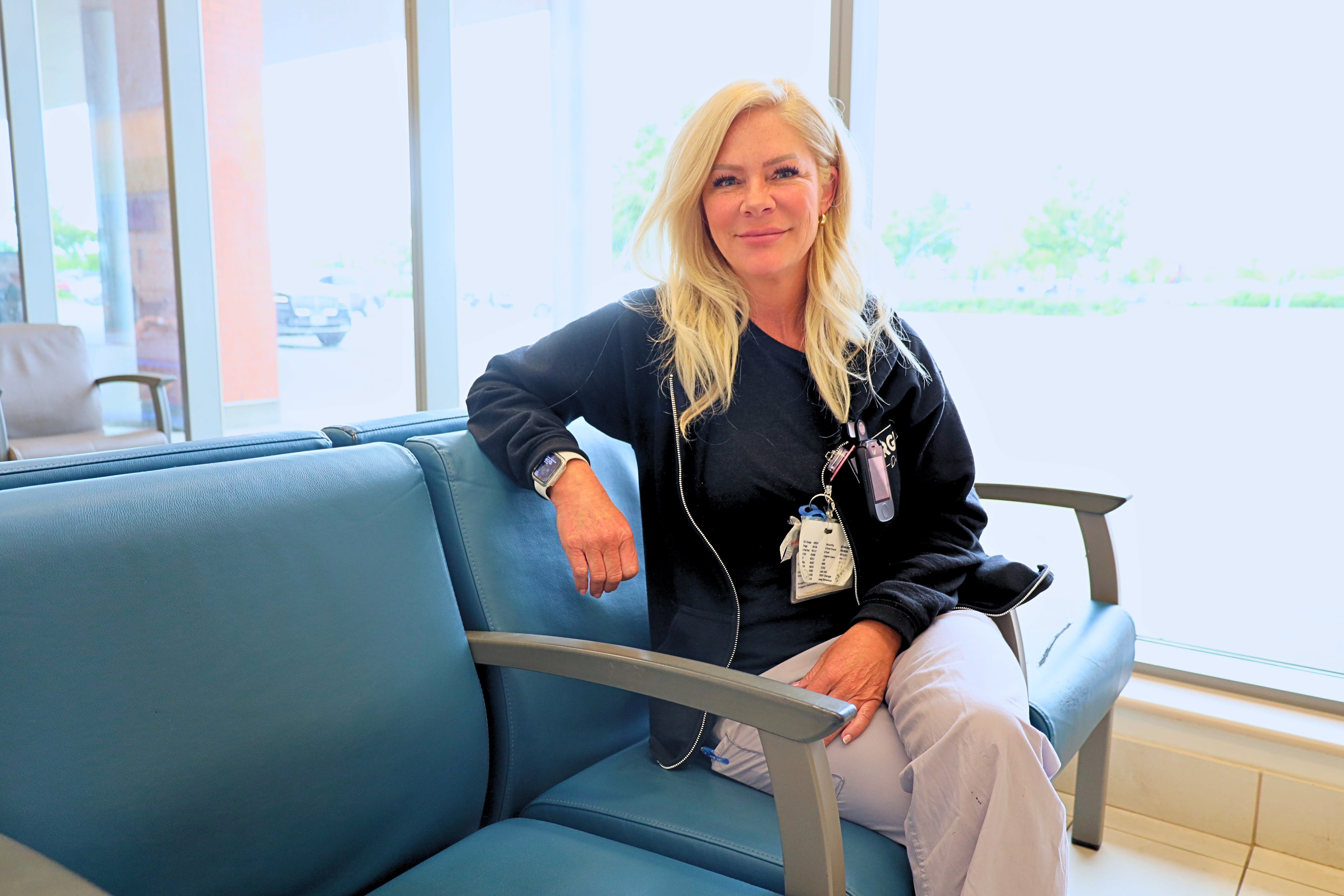
As an Emergency Department (ED) Ambassador, Holly Transumni ensures patients feel supported from the moment they enter the ED.
Niagara Health has introduced a new Emergency Department (ED) Ambassador role at the Marotta Family Hospital to provide added support for patients and families in the waiting room and improve communication throughout their visit.
The pilot program, launched earlier this year, is part of Niagara Health’s broader efforts to improve patient experience and enhance safety in the ED, particularly during times of high demand. The new position is designed to ensure patients feel supported from the moment they enter the ED.
Holly Trasmundi, a long-time Niagara Health Personal Support Worker (PSW) with 14 years of ED experience in both St. Catharines and Niagara Falls, is the first to take on the new role. Her knowledge of emergency operations, combined with her patient care background, makes her well-suited to support this new initiative.
“My job is to greet patients as they arrive, help them understand next steps and keep an eye on how they’re doing while they wait,” says Trasmundi. “It’s also a chance to answer questions and explain what they can expect based on the reason they’ve come in.”
Trasmundi works closely with triage and clinical staff, flagging any changes in a patient’s condition and ensuring that emerging issues are communicated without delay. She also plays a key role in helping people understand how emergency care is delivered.
The role is part of the co-design work under Niagara Health’s Reimagining Patient Experience Plan, a system-wide initiative focused on improving how care is delivered and experienced across the organization. The ED is the first area to bring this work forward, piloting the ambassador role to address communication gaps and enhance patient support during what can be one of the most stressful points of care.
“A lot of people assume it’s first-come, first-served,” she says. “When I explain how triage works — that we prioritize based on how urgent the medical concern is — it helps manage expectations and reduce frustration.”
One of the goals of the ED ambassador role is to improve the waiting room experience during longer wait times, when patients may not fully understand what’s happening behind the scenes. As the ambassador, Transmundi provides reassurance and updates while allowing clinical staff to remain focused on care delivery.
“Our hospitals are seeing more complex patients and an increase in demand for emergency care,” says Tara Coffin-Simpson, Director of Emergency Services at Niagara Health. “This role adds another layer of support and helps make the experience better for both patients and staff alike.”
Trasmundi also uses the opportunity to educate patients and families about healthcare resources available in the community. In many cases, non-emergency concerns may be better addressed through primary care providers, pharmacists or other services such as Virtual Urgent Care.
“Sometimes, when appropriate, I let people know that Virtual Urgent Care might be an option for future visits,” she says. “It’s about helping people understand what services are out there so they can make informed choices the next time they need care.”
Robert Cosby, Director of Patient Experience, says the ED ambassador role reflects Niagara Health’s focus on patient-centred care and continuous improvement.
“We’re always looking for ways to better support the people we serve,” says Cosby. “This role allows us to improve communication, reduce anxiety and respond more quickly to concerns. It’s a simple concept that can have a meaningful impact.”
In one instance, Trasmundi’s presence helped prevent injury when a patient lost consciousness in the waiting area. She was nearby and able to catch the patient before they hit the floor, ensuring prompt medical attention and avoiding further complications.
Early feedback from patients and staff has been positive. Patients report feeling more informed and supported, while team members say the added visibility in the waiting room has improved safety and coordination.
As Niagara Health evaluates the pilot over the coming months, the organization will consider how the ED ambassador role could be expanded to other sites.
“This is just one of many steps we’re taking to improve the emergency care experience for our patients,” says Coffin-Simpson. “It’s about listening to what our patients need — and responding with care, clarity and connection.”

